Maintenance Tips to Extend LED Moving Head Lifespan
- Maintenance Tips to Extend LED Moving Head Lifespan
- Why Proper Maintenance Matters for Moving Head DJ Lights
- Daily and Pre-Event Checks for Moving Head DJ Lights
- Cleaning Optics and Lenses to Maintain Light Output
- Cooling, Airflow and Fan Maintenance
- Power Quality and Cabling Best Practices
- Control Signals, DMX and Network Maintenance
- Firmware, Software and Calibration
- Mechanical Care: Motors, Belts and Moving Parts
- Environmental Control and Storage
- Preventive Maintenance Schedule and Logbook
- Troubleshooting: When to Repair vs Replace
- Estimated Impact of Maintenance: A Comparative Table
- Choosing Fixtures with Maintenance in Mind
- LQE — Quality, Scale and Support to Maximize Your Fixture Lifespan
- Cost-Benefit: Maintenance vs Replacement
- FAQ — Common Questions About Moving Head DJ Lights Maintenance
- Q: How often should I replace fans in moving head dj lights?
- Q: Can I clean internal optics myself?
- Q: How much can maintenance extend LED lifespan?
- Q: Is replacing the LED engine worth it?
- Q: What spares should I keep on hand for touring rigs?
- Contact LQE / View Our Products
- Sources
Maintenance Tips to Extend LED Moving Head Lifespan
Why Proper Maintenance Matters for Moving Head DJ Lights
Moving head dj lights are a pivotal investment for clubs, touring rigs, theaters, and event producers. Though LEDs themselves are long-lived compared with discharge lamps, the overall lifespan of a moving head fixture depends on many mechanical and electronic subsystems: fans, motors, optics, drivers, connectors, and firmware. Proper, regular maintenance reduces downtime, prevents catastrophic failures, preserves light output and color fidelity, and lowers total cost of ownership. This guide provides practical, industry-proven maintenance actions you can perform on-site and a preventive schedule to extend the working life of your fixtures.
Daily and Pre-Event Checks for Moving Head DJ Lights
Before each event, perform a quick checklist focused on safety and performance. These short checks reduce the risk of in-service failures:
- Visual inspection for loose fasteners, cracked housings, or foreign objects lodged in moving parts.
- Confirm secure truss or clamp mounting and that safety cables are properly attached.
- Power on and listen for abnormal noises from fans or motors—squeals, grinding, or excessive vibration indicate wear.
- Run a basic movement test to ensure pan/tilt operate smoothly and without stalling; exercise color wheels, gobos, and iris to check for delays or misalignment.
- Verify DMX/signal connectivity and confirm correct addressing and profiles in your desk/software.
These actions are quick but effective; routine daily checks catch issues while they are small and far less costly to fix.
Cleaning Optics and Lenses to Maintain Light Output
Dust, fingerprints, and residue on lenses, filters, and fresnel surfaces reduce output and alter beam characteristics. For moving head dj lights, optics cleanliness directly affects perceived brightness and color temperature. Follow these steps:
- Use a soft air blower (not canned air) to remove loose dust.
- Clean lenses with lint-free microfiber and a mild lens-cleaning solution (isopropyl alcohol 70% mixed with distilled water 30% is commonly used). Avoid household cleaners and abrasive cloths.
- For internal optics that are user-serviceable, disconnect power and follow the manufacturer's procedure before opening housings. If you must clean internal glass elements, wear nitrile gloves to avoid fingerprints.
Frequency: clean external optics monthly in dusty environments; every 3–6 months in cleaner venues. Consistent cleaning preserves lumen output and reduces stress on LED drivers that may try to compensate for diminished light.
Cooling, Airflow and Fan Maintenance
Thermal management is the most critical factor in electronic longevity. LEDs and power electronics run hotter when airflow is obstructed; sustained high temperatures accelerate lumen depreciation and degrade driver components.
- Keep cooling inlets and outlets clear of dust. Use a soft brush and vacuum (low suction) to remove buildup from vents and heat sinks.
- Inspect fans monthly; listen for bearings noise and feel for wobble. Replace failing fans proactively—cheap compared with replacing an LED engine or driver board.
- Ensure fixtures are installed with adequate spacing to allow ventilation. Do not stack moving head dj lights tightly during operation.
Tip: Monitor operating temperature with a handheld infrared thermometer. If core components exceed manufacturer-recommended temperatures, reduce duty cycle and investigate ventilation.
Power Quality and Cabling Best Practices
Power anomalies are a common cause of premature failure. LEDs are sensitive to voltage spikes and unstable supply, and moving heads contain control electronics that can be damaged by poor power conditions.
- Use clean, stable power sources; prefer line conditioning or UPS units for critical shows.
- Avoid daisy-chaining too many fixtures on a single circuit—overcurrent stresses drivers and can trip breakers mid-show.
- Inspect power cables and connectors for frays, exposed conductors, or overheating discoloration. Replace any suspect cables immediately.
- Consider using powerCON or stage-grade connectors rather than domestic IEC leads for touring rigs.
Control Signals, DMX and Network Maintenance
Intermittent DMX or network issues often masquerade as fixture malfunctions. Keep data lines healthy to prevent unnecessary troubleshooting and stress on fixtures caused by erratic commands.
- Use quality DMX cabling and proper termination to avoid reflections and noise.
- When using Ethernet-based lighting protocols (sACN, Art-Net), ensure switches are configured for low latency and minimal packet loss.
- Document and label connectors and addresses to speed diagnosis during shows.
Firmware, Software and Calibration
Modern moving head dj lights often contain firmware that improves motor control, color calibration, and protection routines. Keeping firmware updated can improve reliability and extend component life by optimizing thermal or movement behavior.
- Check manufacturer release notes before upgrading firmware—ensure compatibility with your console and show files.
- Back up fixture profiles and configurations before updates.
- Perform calibration routines if provided (e.g., homing/pan-tilt re-indexing) to keep motors operating within intended ranges.
Mechanical Care: Motors, Belts and Moving Parts
Pan and tilt motors, gear trains, bearings, and drive belts are wear points. Proper lubrication and inspection extend life significantly.
- Follow the manufacturer's guidance for lubrication—use only recommended lubricants and avoid over-application which attracts dust.
- Inspect gear teeth, belts, and sprockets for wear or slack. Replace parts at the first sign of degradation rather than waiting for failure.
- Tighten fasteners to specified torque values to avoid misalignment, but do not over-tighten plastic-threaded joints.
Environmental Control and Storage
Environmental factors—humidity, salt air, temperature extremes and dust—affect component longevity. Proper storage and environmental controls can prevent corrosion and electrical shorts.
- Store fixtures in a dry, temperature-stable environment. Ideal storage: 10–25°C and 30–60% relative humidity.
- For coastal venues or outdoor touring, use corrosion-resistant covers and more frequent inspections to combat salt contamination.
- During hot-weather transport, avoid leaving fixtures in sealed vehicles where temperatures can exceed safe limits.
Preventive Maintenance Schedule and Logbook
Establishing a consistent preventive maintenance program is the single most effective strategy to extend lifespan. A simple logbook or digital record should track actions, part replacements, firmware versions, and operating hours.
- Daily: quick pre-show checks (as above).
- Monthly: external cleaning, fan inspection, light output check, and basic movement tests.
- Quarterly (or every 500–1,000 hours): internal cleaning (if user-serviceable), lubrication, and electrical connector checks.
- Annually (or every 2,000–5,000 hours): full service including driver checks, LED module testing, motor calibration, and replacement of worn mechanical parts.
Record operating hours per fixture where possible. Many consoles and media servers can tally runtime per fixture for more accurate service intervals.
Troubleshooting: When to Repair vs Replace
Knowing when to perform a field repair, send to an authorized service center, or replace a fixture avoids wasted time and cost.
- Minor issues—like a noisy fan, failed gobo, or cracked lens—can often be replaced onsite with spare parts.
- Critical electronic failures (smoked drivers, burned PCBs) should be handled by authorized service centers to preserve warranty and ensure safety.
- If LED engines show significant lumen depreciation or color shift after warranty, evaluate total repair cost vs. replacement; LED engines and driver replacements can be expensive but may still be cost-effective for high-end fixtures.
Estimated Impact of Maintenance: A Comparative Table
Below is an industry-based estimate of how proper maintenance can affect the working lifespan and downtime of moving head dj lights. Figures are approximate and intended as guidance based on manufacturer recommendations and field experience.
| Maintenance Action | Estimated Lifespan Increase | Primary Benefit |
|---|---|---|
| Regular optic and fan cleaning | +15–30% operating hours | Lower operating temperature, maintained lumen output |
| Proper power conditioning and cabling | +10–25% | Reduced electronic stress and failures |
| Scheduled mechanical inspections and part replacement | +20–40% | Prevents catastrophic motor/gear failures |
| Firmware updates and calibration | +5–15% | Optimized control reduces strain |
Sources and manufacturer maintenance guides support these ranges as realistic expectations when combined into a comprehensive program (see sources below).
Choosing Fixtures with Maintenance in Mind
When purchasing moving head dj lights, consider design choices that simplify maintenance: modular LED engines, easy-access fan assemblies, standardized connectors, and widely available spare parts. Fixtures designed with serviceability in mind cost less to maintain and provide a lower total cost of ownership.
LQE — Quality, Scale and Support to Maximize Your Fixture Lifespan
LQE was founded in 2008 and is headquartered in Foshan, China. We are a professional OEM/ODM stage lighting equipment manufacturer specializing in the R&D, production, and sales of middle- and high-end digital stage lighting. Our production base covers an area of about 10,000 square meters, has the ability to produce 100,000 lighting fixtures annually, and has 80 national patents.
Our range of stage lighting equipment is diverse, including various moving head lights and static lights, suitable for applications in theaters, music concert stages, studios, broadcasting, religious spaces, exhibitions, nightclubs, leisure venues, theme parks, and more. We are committed to providing first-class modern stage lighting equipment and exceptional customer service, all while maintaining the best value and cost-effectiveness in the industry. Our goal is to deliver high-quality, long-lasting lighting solutions that help stage designers and producers realize their vision. Our vision is to become the world's leading manufacturer of LED stage lighting.
How LQE's advantages relate to extending fixture lifespan:
- R&D and patented designs: better thermal paths, serviceable modules, and reliable motor control reduce wear and extend life.
- Large production and quality control: consistent component sourcing and QC reduce infant mortality rates common in cheap imports.
- Wide spare-parts availability and OEM/ODM support: faster repairs and authorized service reduce downtime.
Main product lines and core competencies: Waterproof stage lighting, beam moving head light, Moving head hybrid light, Moving head wash light, moving head profile light, LED effect light, LED studio light, LED par light, Lighting accessories. LQE emphasizes robust thermal design, modular LED engines, precision motor assemblies, and field-serviceable components to minimize maintenance complexity and total operating cost.
Cost-Benefit: Maintenance vs Replacement
Performing routine maintenance is almost always more cost-effective than early replacement. The table below summarizes typical cost relationships (generalized):
| Action | Typical Cost | Typical Result |
|---|---|---|
| Annual preventive service | Low to Moderate | Extended life, fewer failures |
| LED engine replacement | Moderate to High | Restores output, may approach replacement cost on older fixtures |
| Full fixture replacement | High | Latest features and efficiency but highest immediate cost |
Decide based on fixture age, remaining warranty, spare-part availability, and whether modern replacement offers tangible benefits (e.g., better efficiency or features).
FAQ — Common Questions About Moving Head DJ Lights Maintenance
Q: How often should I replace fans in moving head dj lights?
A: Replace fans when they become noisy, show shaft play, or after roughly 20,000–30,000 hours as preventive action. In dusty or coastal environments, replacement intervals should be shorter. Monitoring temperature and noise helps determine exact timing.
Q: Can I clean internal optics myself?
A: Only if the manufacturer provides user-serviceable access and clear instructions. Otherwise, send the fixture to an authorized service center to avoid voiding warranty or causing damage.
Q: How much can maintenance extend LED lifespan?
A: Proper maintenance can reasonably extend the useful life by 20–40% compared with neglected fixtures, depending on the types of interventions and operating environment. Regular thermal management and power quality practices yield the biggest gains.
Q: Is replacing the LED engine worth it?
A: If the fixture is high-quality, structurally sound, and has serviceable electronics, replacing the LED engine can restore performance at lower cost than full replacement. For older or commodity fixtures, replacement may be more economical.
Q: What spares should I keep on hand for touring rigs?
A: Recommended spares: fans, power cables, fuses, gobos, color wheels (if modular), and a small stock of frequently used fasteners and connectors. Carrying a spare driver board or LED module is ideal for critical shows when feasible.
Contact LQE / View Our Products
For durable moving head dj lights engineered for long life and ease of maintenance, explore LQE's product range or contact our technical team. We offer OEM/ODM solutions, spare parts support, and service guidance to maximize your fixtures' uptime. Contact us to request datasheets, maintenance guides, or a quote tailored to your application.
Sources
- Signify (Philips Lighting) — Guidance on LED lifetime and lumen maintenance (manufacturers' technical documentation).
- U.S. Department of Energy — LED lifetime and performance considerations (energy.gov).
- Chauvet DJ — Product maintenance recommendations for moving lights (manufacturer maintenance pages).
- American DJ (ADJ) — Moving head service and cleaning guidelines.
- Electronic Theatre Controls (ETC) — Best practices for lighting maintenance and thermal management.
Note: Percentage estimates and intervals in this article are based on aggregated industry guidance and field experience from manufacturers and professional rigging/maintenance practices. For fixture-specific instructions, always follow the original manufacturer's service manual.
The 10 Key Factors in led lighting for stage That Affect Cost
Where to Buy best led stage wash lights
How to start the led stage lighting installation business ?
How to Choose the led stage light manufacturer and supplier in us?
1000w
What Is the Warranty Offered by LQE Lighting?
LQE lighting offers a comprehensive 1-year warranty and spare parts on its products, giving customers peace of mind and investment protection.
What Kind of Certificates You Offer?
All kinds of certificates could be offered by LQE digital moving light factory, which depends on customer’s required, different pricing plan for different approval.
Can I Have a Sample Order for an LED DJ Light?
Sure, sample order are welcome to test and check LQE quality. Mixed samples are acceptable.
Does LQE Offer a Stage Light Design Solution?
LQE experienced team glad to supply a stage lighting configuration design solution or suggestion for projector who don’t have much experience in lighting design, project, theatre and studio.
Do You Supply After-Sale Service?
LQE lighting offers 7x24 hrs systematic SOP customer support with dedicated personnel, ensuring quick and comprehensive assistance for stage lighting needs.
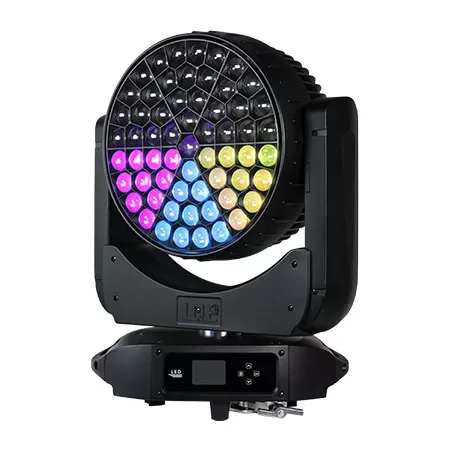
1000w 61x40w RGBW Stage Moving Head Wash Light LW1000
1000W 61x40W LED RGBW Mulichips Moving Head Wash Lights with Zoom (5°–50°), Covering Large Range and Long Distance. Designed to deliver a 5°–50° ultra-large zoom range to achieve a greater wash effect, illuminating stages and events with stunning lighting effects.
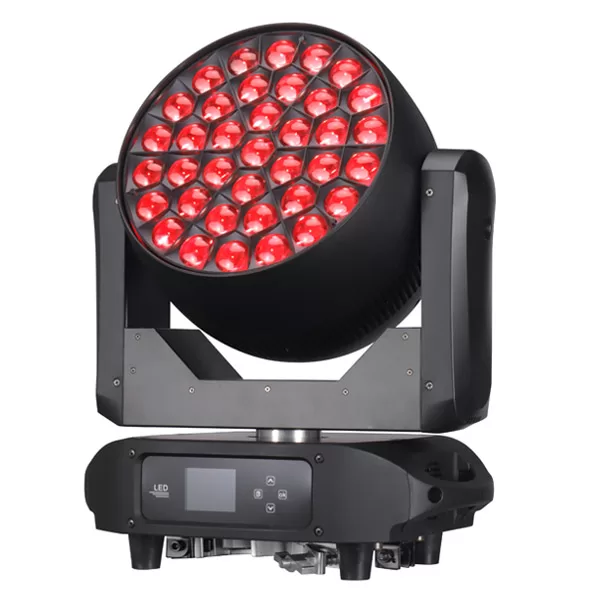
800w 37x40w RGBW Stage Moving Head Wash Light LW800
800W 37x40W LED RGBW Mulichips Moving Head Wash Lights with Zoom (5°-50°), Covering Large Range and Long Distance. Designed to deliver a 5°–50° ultra-large zoom range to achieve a greater wash effect, illuminating stages and events with stunning ring control lighting effects.

LED Moving Head Stage Wash Light LW200Z
The versatile moving head stage light provides a powerful lighting solution for theaters, concerts, and large outdoor performances. Suitable for theaters, TV stations, entertainment stages, and large outdoor performance scenes.

600w 19x40w RGBW Stage Moving Head Wash Light LW600 Zoom IP20
600W 19x40W LED RGBW Mulichips Moving Head Wash Lights with Zoom (5°–50°), Covering Large Range and Long Distance. IP20: Designed to deliver a 5°–50° ultra-large zoom range to achieve a greater wash effect, illuminating stages and events with stunning ring control lighting effects.

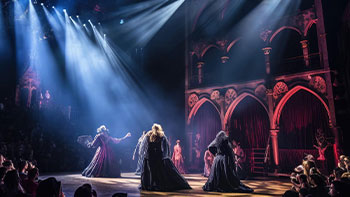
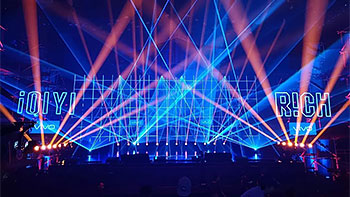

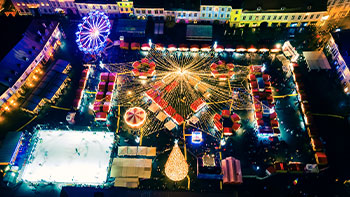








Linkedin
YouTube
Whatsapp: +8618924548390
TikTok